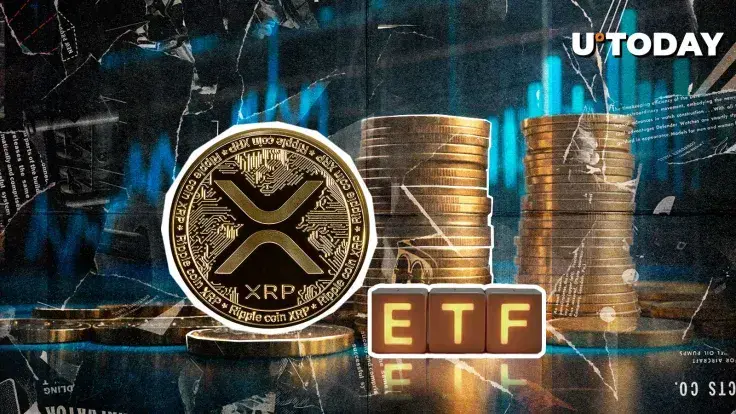XRP's New Frontier: Ripple CEO Unveils His Revolutionary Credit Card

The cryptocurrency market has recently witnessed a flurry of significant activities, from new product launches and strategic institutional investments to large-scale whale movements. These events underscore the dynamic and evolving nature of the digital asset landscape.
One prominent development is the launch of the new XRP rewards credit card by Gemini, proudly showcased by Ripple CEO Brad Garlinghouse on social media platform X. Released on Monday, this special edition card, launched in partnership with Ripple, allows users to earn up to 4% XRP back on everyday purchases. Gemini stated that the card's introduction was spurred by the massive price gains recorded by the XRP token. However, the product's reception within the XRP community has been somewhat lukewarm. Many users expressed that the card failed to live up to the prior hype, noting that Gemini had already offered XRP rewards with its ordinary products for months, thus not introducing significant novelty. Furthermore, its availability being restricted solely to the U.S. also drew criticism from some XRP holders.
In response to the tepid initial reactions, both Garlinghouse and Gemini are actively working to generate renewed excitement. Gemini CEO Tyler Winklevoss humorously mentioned that he would grant Garlinghouse a “whale limit” on his new XRP card, quipping, “I’m told he’s good for it.” Ripple's Chief Technology Officer, David Schwartz, also joined in, posting his own XRP rewards card while donning XRP-themed attire. Winklevoss highlighted that the card quickly became one of the top trending tokens. This launch further solidifies Gemini's deepening ties with Ripple, an association that has seen Gemini expand access to Ripple’s RLUSD stablecoin, add XRP as collateral for derivatives trading, and reportedly receive a credit line from Ripple ahead of its potential initial public offering.
Concurrent with these retail and partnership developments, institutional interest in the cryptocurrency space remains robust. BlackRock, a financial giant, made headlines with a substantial purchase of $314 million worth of Ethereum (ETH) on August 26th. This significant acquisition occurred despite a prevailing dip in the broader crypto market, signaling strong institutional confidence in Ethereum. The move is seen as a strategic effort to accumulate the second-largest cryptocurrency by market capitalization at a reduced cost. BlackRock’s iShares Ethereum ETF is already recognized for its role in driving institutional adoption of both Bitcoin and Ethereum, making this latest acquisition, while noteworthy for its timing, consistent with their established investment strategy.
On another front, the Dogecoin (DOGE) community observed a massive whale movement that sparked considerable discussion. An astonishing 500,000,000 DOGE, valued at over $106 million, was transferred from an unidentified wallet directly into Binance's hot wallet. Such large inflows into exchange wallets frequently trigger speculation among market participants regarding potential sell-offs, significant liquidity shifts between entities, or individual holders deciding to offload their substantial holdings. Following this transaction, Binance’s DOGE wallet now holds over 820 million DOGE. The mysterious whale behind this transfer has a history of overseeing over 12 billion DOGE in inflows and nearly 10 billion DOGE in outflows, yet still retains more than 24 billion coins even after this latest significant transaction. This single transfer alone increased Binance’s Dogecoin balance by more than 2%, further solidifying its position as one of the largest DOGE holders globally.
You may also like...
F1 Shocker! Red Bull Star Stripped of Italian Grand Prix Victory After Dramatic Race Blunder

The Italian Grand Prix at Monza delivered a mix of record-breaking triumphs and dramatic incidents. Max Verstappen secur...
Chaos Erupts! Serbia vs England Match Marred by Fan Fights, Lasers, and Stadium Incidents

England's commanding 5-0 victory over Serbia in a World Cup qualifier was overshadowed by numerous crowd disturbances, i...
Hollywood Legend Michael Caine, 92, Ends Retirement for Vin Diesel's Action Sequel

Veteran actor Sir Michael Caine, aged 92, is set to come out of retirement to star alongside Vin Diesel in a sequel to “...
Charlie Sheen's Shocking Netflix Doc Explores Wild Revelations & Comeback Hopes

Charlie Sheen's new two-part Netflix documentary, “aka Charlie Sheen,” chronicles his tumultuous life, from his rise to ...
MTV VMAs 2025 Shocker: Tyla's Historic Win, Full List of Winners, Performers & Presenters Unveiled!

The 2025 MTV Video Music Awards crowned Lady Gaga as the night's big winner, taking home multiple trophies including Art...
Holy Ten's War with Mnangagwa's Son Ignites: Death Dares and Terrorist Accusations Unleashed

Zimbabwean hip-hop artist Holy Ten has launched a scathing attack on President Emmerson Mnangagwa's sons, Collins and Se...
Scandal Erupts: Alexander Brothers Face Mounting Assault Allegations

The Alexander brothers, luxury real estate moguls, face sex trafficking and sexual assault charges from over 60 alleged ...
Rock Legends Unite: Oasis Reunion Tour Ignites Legal Battles and Fan Frenzy!

The iconic band Oasis has reunited for a highly anticipated world tour in 2025, bringing original members back together ...
